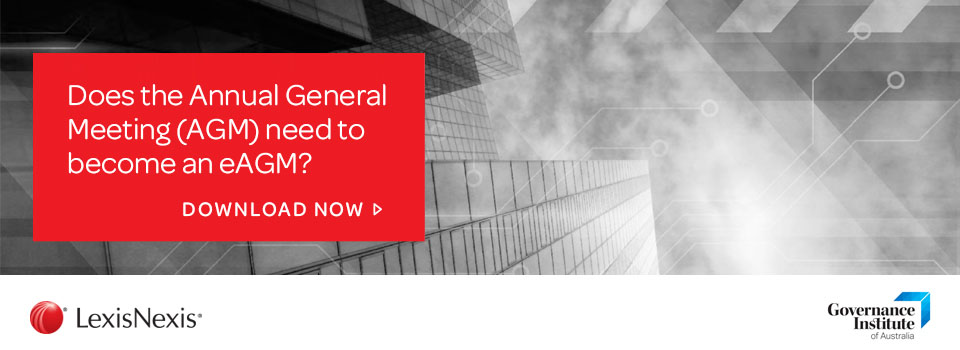Does the Annual General Meeting (AGM) need to become an eAGM?
5 May 2016

Introduction
The annual general meeting (AGM) has long been the forum where shareholders and directors have the opportunity to interact. It is a two-way communication forum which facilitates the exchange of information, the examination of profit and performance-related issues and enables shareholders to ask questions of the board about company performance and stewardship.
The AGM is also a vital forum for decision-making, where shareholders vote on company resolutions, approve the remuneration report and elect and remove directors. These dual functions make the AGM a valued element of the governance framework.
Yet, there is widespread acceptance that the AGM in its original form needs to be revised to meet 21st century expectations. When the AGM was originally conceived, it was in an era of horse and coach, pen and ink, limited printing, and a fledgling postal service. Time and the advent of new technologies have meant that many traditional AGM processes, including: the focus on holding physical meetings; using old-fashioned communication and voting methods; and, the centrality of printed meeting materials, need to be critically revisited today.
In 2012, the Corporations and Markets Advisory Committee (CAMAC) released a discussion paper on the AGM and Shareholder Engagement and commenced public consultation on ideas for AGM reform. CAMAC was due to report its recommendations on August 2014. However, as a result of the Federal Government's decision to abolish CAMAC in the 2014 Budget, this chief project was left incomplete.
The need for AGM reform remains very much a 'live' issue for companies and governance professionals eager to improve shareholder engagement enhance the efficiency of the process and the integrity of member communications, as well as decision-making.
To bring this important issue back to the fore, LexisNexis and Governance Institute of Australia held a roundtable discussion with senior company secretaries and governance professionals of some of Australia's top ASX-listed companies to understand how companies are managing the challenges of the AGM today. Issues discussed included:
- Trends in shareholder attendance and engagement
- Current initiatives to promote shareholder attendance and engagement
- Proposals for AGM reform
- The role of legislative solutions.
The discussion was conducted in March 2016 in accordance with the Chatham House Rule to facilitate a frank exchange of views with the aim of sharing insights and experiences within the governance community, as well as identifying practical strategies for improving AGM engagement and broad-view ideas for longer-term reform.
 LexisNexis
LexisNexis
